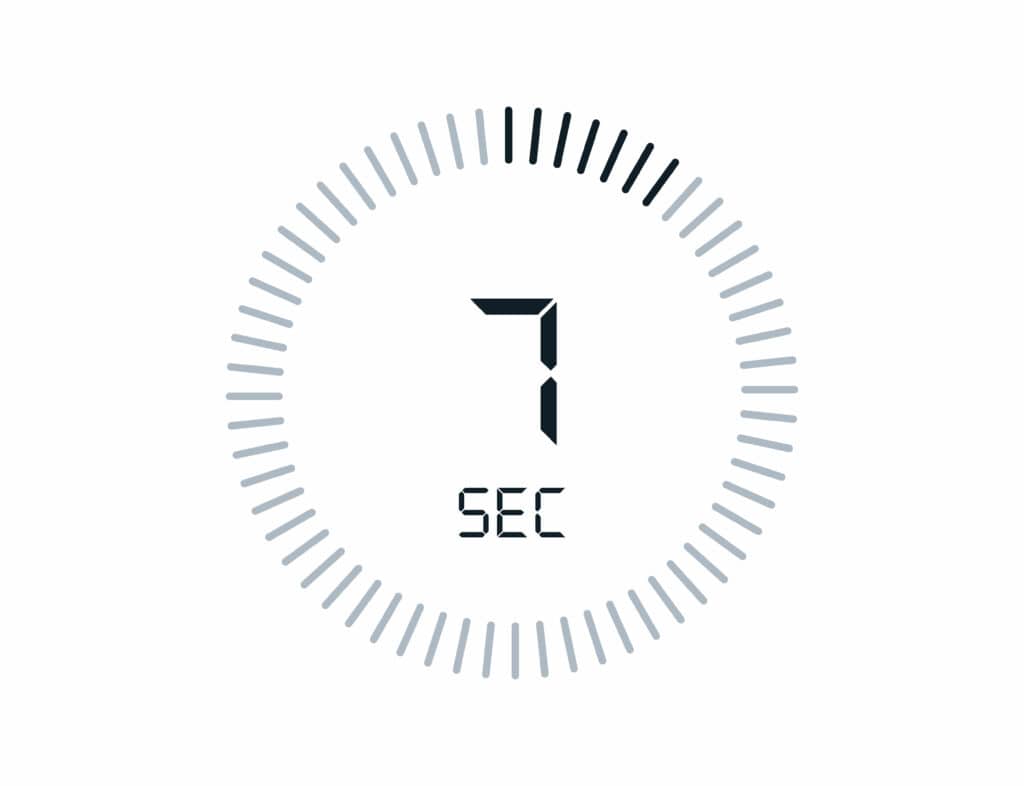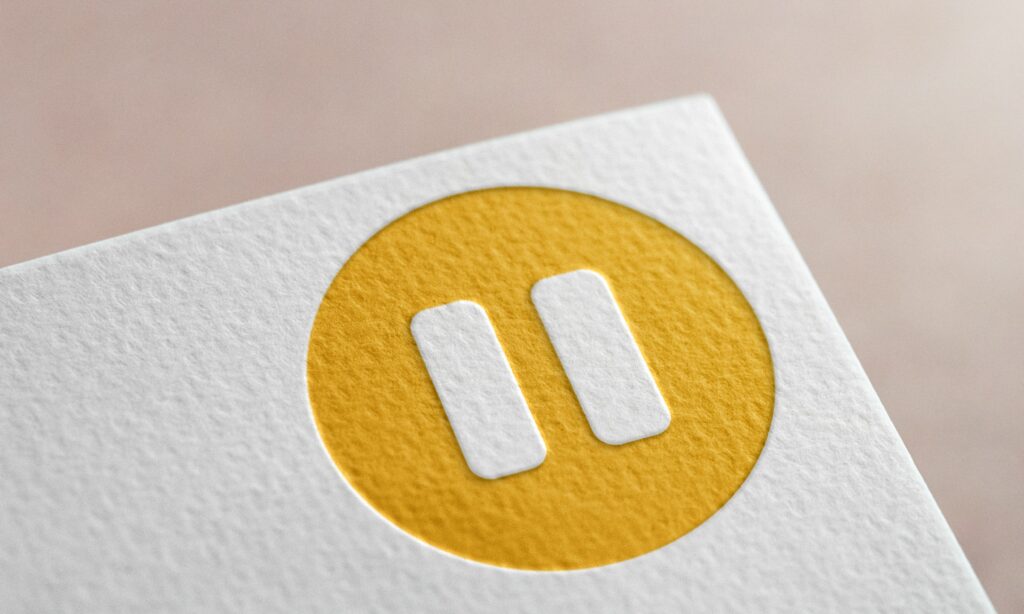In this Article...quick links
- What are the symptoms of stage fright?
- What causes public speaking stage fright?
- Fast and Effective Ways to Overcome Stage Fright (Performance Anxiety)
- What to do in the lead-up to your presentation
- What to do about stage fright when you get on stage
- How to deal with stage fright during a presentation
- Some final pre-presentation advice
- Tailored and personalised presentation skills training
In our latest series on presenting at a conference for the first time, which people have said was very useful; many people have also asked us how we could help them with their stage fright too.
Stage fright, pre-presentation nerves, performance anxiety, a fear of public speaking, glossophobia, call it what you will, is THE number one phobia in adults – a whopping 75% of us take fright at the mere thought of having to speak in public. It’s most common in London, where there’s an average of 60,300 searches a month for things like “fear of public speaking” and “overcoming public speaking”.
Well, the good news is that it’s perfectly normal! In fact, no nerves are probably a bad thing (that can signal complacency, a lack of care, or even arrogance).
When presenting, nerves can be beneficial if you can learn to harness them, as adrenalin can help our minds stay sharp and focused. But, out of control, they don’t help anyone.
When it comes to managing presentation nerves (you’ll never, and shouldn’t eliminate them completely), there is not an instant fix. As we’ll explain later, nerves tend to be the result of one or a number of factors. But don’t worry because in this blog we’ll discuss the symptoms of stage fright and the causes behind the fear of public speaking. Then we’ll walk you through a range of practical and successful strategies to manage your nerves and give you the skills and confidence to become a better presenter and public speaker.
What are the symptoms of stage fright?
Just so that you recognise the myriad ways stage fright can manifest itself, the most common symptoms are a dry mouth, a weak voice, rapid or shallow breathing, shaking, sweaty palms, a tight stomach, nausea, and in severe cases, even panic attacks.
An increase in the production of adrenalin in the body is the primary cause of these symptoms. It’s a primitive ‘fight, flight or freeze’ reaction that still exists in humans even though we no longer have a need for it – at least not as presenters. However, your brain and body mistakenly think you are in mortal danger. Simply worrying about forgetting what you’re going to say, making a fool of yourself, or what others will think of us, can all trigger the natural instinct to just run away, or to freeze.
To begin to manage these symptoms it helps to understand some of the causes of them.
What causes public speaking stage fright?
Stage fright can be caused by anxiety. The main causes of this anxiety are threefold; being under prepared, the notion that the audience is there to criticise rather than support, and a tendency towards perfectionism or unrealistic goals. We’ll look at each of these in more detail and then take you through a handy checklist of strategies to help you overcome nerves.
1. Being under-prepared
There are no shortcuts when it comes to preparing and planning for a presentation. The hard work has to be done before you put pen to paper (so to speak)! Benjamin Franklin famously once said, “If you fail to plan, you’re planning to fail!”. One of the main causes of stage fright is being or feeling under-prepared.
The key to overcoming this is to concentrate on 3 key areas in the preparation stages:
- Firstly, consider your presentation from the audience’s point of view. If you were them, what would you want to hear? Why would you want to listen? What type of information would be interesting for you? What ideas would be the most valuable? Put simply, the more your content focusses on the needs of the audience, the more confident you’ll actually feel about sharing your presentation.
- Secondly, spend significant time making sure your presentation tells a clear and logical story that conveys your message in a compelling way. We take our participants through our Presentation MapperTM methodology, which forms one of the most significant parts of all our coaching/training courses, to help presenters do just that.
For more insights into crafting a compelling narrative check out the 4 steps of our Presentation MapperTM.
- Finally, rehearse and practise until you feel confident – do this out loud, certainly more than once (you may find videoing yourself on your phone helpful), and keep a check on your timing and flow.
- A GOOD tip is to memorise your opening sentence(s) so that you know exactly how you are going to start. However, don’t just think about the words but also about the tone of your voice, where you will be standing, your eye connection with the audience, and any gestures you might want to incorporate. The more pressure you can take off yourself when you start the presentation the more positive you will feel.
- Whilst we never ever recommend memorising a whole script – it’s too easy to lose your place and miss something out – you should at least commit the key messages from each section or ‘chapter’ of the presentation to memory. In its most limited way, these can just be individual words/phrases that will help prompt you to recall your overall narrative.
2. Believing the audience is there just to criticise
Try to recall the last time you were in the audience listening to a presentation. Did you want the presenter to deliver a good presentation that helped you to understand their message/point of view, or were you only there to try to find fault? We’re sure it’s the former. Remember that the audience is not there to criticise but to listen and learn, so help them to do this and try to include ways to involve the audience in your presentation in order to bring them along on the journey with you.
3. Perfectionism
If you still feel anxious having fully practised your presentation, and you genuinely believe the audience is there because they want to hear what you have to say, then there might be other, self-imposed, factors that are making you feel nervous. Perhaps you are setting the bar too high and generating additional pressure on yourself. Remember that no one is perfect (not even you!) so try to set yourself realistic goals and standards. Accept that doing the best that you can do will be more than good enough.
Addressing these causes that can amplify our fear of public speaking will certainly help to ease our anxiety about presenting. But what else can we do?
In this next section, we’ll look at:
- 4 practical things you can do in the lead-up to a presentation
- 7 powerful techniques for the first 7 seconds of a presentation
- How to deal with stage fright during a presentation
Fast and Effective Ways to Overcome Stage Fright (Performance Anxiety)
What to do in the lead-up to your presentation
Relaxation, breathing and visualisation techniques are great ways to calm your nerves and help you feel more prepared. We often take shallow breaths when we are nervous and this actually increases our level of anxiety and leads to shortness of breath that can impact our voice control. If you practise some of the techniques below on a regular basis then being able to calm your nerves will become second nature and more controllable in the future.
Exercise 1. 3-4-5 Breathing technique
Find somewhere comfortable, ideally lying down but a chair is fine. Close your eyes and take a deep breath in for 3 seconds, hold your breath for 4 seconds, and then exhale for 5 seconds. It’s that easy. After just three minutes you’ll really notice the difference in your mood and state of mind.
Exercise 2. Relaxation
For this one you really do need to be lying down. It’s something you can easily incorporate into your morning or evening routine while you are in bed. Close your eyes and breathe deeply and evenly. Try to think of a place that you love and associate with calmness. Think of the smells and sounds you might be experiencing if you were there. Now clench your head and neck for 5 seconds and then relax. Consciously feel your head and neck sinking deep it the pillow for another 10 seconds.
Then, while your head and neck are still relaxed, clench your shoulders for five seconds and then relax. Each time you relax imagine you are sinking further and further into a soft pillow. Work your way down your body using the same technique; arms, fingers, stomach etc all the way down to your toes. This is also a great technique to use if you are struggling to get to sleep. If you practise this exercise regularly, you’ll find that you can get into a state of relaxation in just a few minutes by thinking of your special place and imagine every part of your body relaxing in a fluid and downward movement.
Exercise 3. Visualise success
Professional athletes use techniques like this all the time to improve their mental preparedness before a competition. Stand in a comfortable, relaxed and upright position. Arms hanging loose, legs shoulder-width apart, your head and neck relaxed. Close your eyes and visualise what success looks like for you. Imagine yourself delivering your best presentation ever. Imagine your start – strong and confident. Imagine the audience during your presentation – smiling, engaged and appreciative. Imagine closing your presentation – the feeling of achievement, getting the results you want, perhaps there is even applause. The brain is a powerful tool so use it to turn your negative thoughts into positive and empowering ones!
Exercise 4. Know the space
A fear of the unknown increases our level of anxiety, so make sure you know where you will be presenting. If you can’t visit the space yourself, get as much detail as you can so you know in advance what the room looks like, how large it is, what the seating is like, what kind of lighting is there, how much room you have to move about, where is the screen positioned, is there a stage? If so, will there be a lectern? Will you have a microphone? For more tips on making sure your presentation space is working for you have a read of our advice about preparing for the venue.
Now plan how you’re going to move around the area as you practise your presentation. Where will you stand when you kick off your presentation, when you deliver your 3 – 5 key points, and also for closing. Practising is not only about knowing what you are going to say, it’s also about understanding how to incorporate movement and make the most of the space available to you. If you’re not sure that moving (with purpose) is a good idea, think about the best TED Talkers you’ve ever seen – they all move!
Finally, it can be useful to think about a point in the room that is your visual focal point that makes you feel calm. It could be an object at the back of the room, or perhaps a window. If you start to feel nervous just look for your focal point for a second or two, take a deep breath and then mentally and emotionally reset. This can be a simple yet effective way to regain your composure and presentation flow.
What to do about stage fright when you get on stage

7 powerful techniques for the first 7 seconds
We’ve all heard the expression “You don’t get a second chance to create a positive first impression.” So, here are 7 tips for the first 7 seconds that will help you to kick-off your presentation smoothly and help boost your confidence.
- Own the room
Be mindful of your body language. Stand tall and try to radiate confidence. Imagine yourself projecting a strong, confident image. Be the person on the outside that you want to feel on the inside.
- Smile
It immediately increases your level of endorphins. So it naturally makes you feel good. And it makes the audience feel good too!
- Connect with your audience
Make sincere eye contact with your listeners. Also, share with them right at the start of the presentation ‘what’s in it for them’ (WIIFT).
- Vary your voice and use a conversational style of speaking
Try to imagine you are having a conversation with a good friend. Change your tone of voice throughout your presentation to reflect your content. This will bring your story to life and engage your audience.
- Use gestures
Gestures are a great way to release tension that can build up in our body as a result of nerves. They can also add weight to your words and create impact. However, be sure to use them at the right time. For some great Dos and Don’ts when it comes to gestures learn what to do with your hands while presenting.
- Incorporate movement
Movement is the most effective technique for physically burning off excess nervous energy. Including movement is also brilliant for maintaining the audience’s attention. So think about how you can use the room very early in your presentation. For more ideas check out why movement is a great way to boost your confidence.
- Be yourself
This is probably the most important tip of all. Apart from anything else, it will be obvious right away if you’re trying to be someone you’re not. So, be your authentic self. Let your natural personality and style shine through. It will not only put you at ease but everyone else too.
How to deal with stage fright during a presentation
Despite all the planning and practising it’s still possible that you will feel a bout of nerves coming on at some point during the presentation.
If this happens then take a pause, a proper pause, for 3 seconds, perhaps have a sip of water, and change your position. To you, it might feel like a long time but we promise you it won’t feel like that to the audience. It will help you to reset and calm your nerves. In fact, pausing can even add impact and authority to your narrative – Barack Obama used this better than almost anyone. As part of pausing, look at the focal point in the room you identified before to calm your nerves.
Another option is to bring the audience in at this stage. Ask if there are any questions on what you have covered so far. You might even practise pausing and re-setting as part of your pre-presentation routine so it feels second nature when you really need it.
Some final pre-presentation advice
- Avoid stimulants such as caffeine and sugar.
- It’s normal to feel nervous but keep it under control. Allow yourself a specific amount of time to be nervous, say 5- or 10-minutes max, set a timer and then move on. Visualise your success.
- Practise your breathing exercises and slow your breath.
- Don’t tell anyone you’re nervous. Project the confident person you want to be.
There’s no doubt that the more you present the easier it will become to calm and manage your nerves. So take every opportunity that you can to put yourself out there, front and centre. After all, it’s not only a crucial business skill but for many of us, it’s a critical career-enhancing skill too. So we think it’s a skill worth mastering – and even enjoying!
Tailored and personalised presentation skills training
If you need to build your team’s presentation skills through personalised training or coaching that is tailored to your business, we can help.
For nearly 20 years we have been the Business Presentation Skills Experts, training & coaching thousands of people in global organisations – check out what they say about our programmes.
To find out more, click on one of the buttons below:

Belinda is the Co-Founder and Managing Director of SecondNature International. With a determination to drive a paradigm shift in the delivery of presentation skills training both In-Person and Online, she is a strong advocate of a more personal and sustainable presentation skills training methodology.
Belinda believes that people don’t have to change who they are to be the presenter they want to be. So she developed a coaching approach that harnesses people’s unique personality to build their own authentic presentation style and personal brand.
She has helped to transform the presentation skills of people around the world in an A-Z of organisations including Amazon, BBC, Brother, BT, CocaCola, DHL, EE, ESRI, IpsosMORI, Heineken, MARS Inc., Moody’s, Moonpig, Nationwide, Pfizer, Publicis Groupe, Roche, Savills, Triumph and Walmart – to name just a few.







